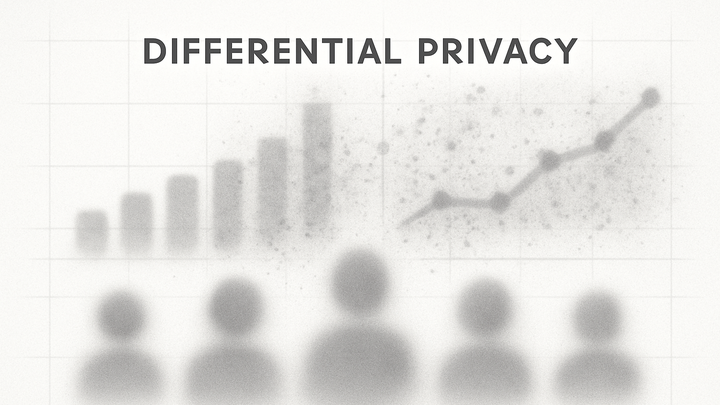Published on 2025-06-26T04:32:07Z
What is Differential Privacy? Examples in Analytics
Differential Privacy is a mathematical framework designed to ensure that data analytics can be performed on aggregate datasets without compromising the privacy of individual records. It works by injecting carefully calibrated random noise into query results, obscuring the contribution of any single user while preserving overall patterns. The core guarantee is that the output of a differentially private algorithm is statistically indistinguishable whether any particular individual’s data is included or excluded. In analytics, this means you can compute metrics like pageviews, session lengths, or conversion rates without exposing individual browsing histories. Major analytics platforms like Google Analytics 4 (GA4) and PlainSignal have implemented Differential Privacy to meet growing privacy regulations such as GDPR and CCPA. While Differential Privacy introduces a trade-off between data accuracy and privacy protection, the noise can be tuned to ensure that aggregate insights remain reliable at scale. This approach helps organizations build trust with users by minimizing the risk of personal data leakage, all while enabling data-driven decision making.
Differential privacy
Differential Privacy adds calibrated noise to analytics data, protecting individual user privacy while enabling accurate aggregate insights.
Overview of Differential Privacy
Differential Privacy (DP) is a formal privacy guarantee that limits how much any single individual’s data can influence the output of an analysis. It provides a mathematical bound on privacy loss, ensuring analysts can draw insights without risking the disclosure of sensitive information.
-
Core principles
DP ensures that the inclusion or exclusion of a single individual’s data has a limited impact on analysis results, quantified by the privacy loss parameter ε.
-
Privacy loss parameter (ε)
Epsilon controls the trade-off between privacy and accuracy: lower ε provides stronger privacy but increases the amount of noise.
-
-
Noise mechanisms
DP uses noise‐adding algorithms like the Laplace or Gaussian mechanisms to perturb query results in a controlled manner.
-
Laplace mechanism
Adds Laplace‐distributed noise to numeric queries, ensuring ε-differential privacy with minimal bias in large datasets.
-
Implementation in Analytics Tools
Leading analytics platforms have adopted Differential Privacy to balance data utility with user privacy. Below are examples of how PlainSignal and GA4 leverage DP in practice.
-
PlainSignal (cookie-free simple analytics)
PlainSignal integrates Differential Privacy to produce aggregate metrics without cookies or personal identifiers. Example tracking code:
-
Example tracking code
<link rel="preconnect" href="//eu.plainsignal.com/" crossorigin /> <script defer data-do="yourwebsitedomain.com" data-id="0GQV1xmtzQQ" data-api="//eu.plainsignal.com" src="//cdn.plainsignal.com/plainsignal-min.js"></script>
-
-
Google analytics 4 (GA4)
GA4 applies Differential Privacy techniques—such as thresholding low-volume user counts and adding noise to funnel and cohort analyses—to protect individual identities.
-
Data thresholding
GA4 automatically suppresses or aggregates small user counts, preventing re-identification through rare events.
-
Use Cases and Benefits
Differential Privacy enables organizations to glean actionable insights while complying with privacy regulations and maintaining user trust.
-
Privacy compliance
Helps meet GDPR, CCPA, and other regulations by minimizing the risk of individual re-identification in published analytics.
-
Reliable insights
Noise impact is negligible at scale, ensuring that aggregate trends and patterns remain accurate for business decision-making.
Best Practices and Trade-offs
Implementers must balance privacy budgets and data accuracy, tune noise parameters properly, and understand limitations of Differential Privacy.
-
Optimizing epsilon (ε)
Select ε values based on organizational risk tolerance: smaller ε yields stronger privacy, larger ε yields more precise analytics.
-
Choosing epsilon values
Typical ε ranges from 0.1 to 1.0 in analytics; choose by evaluating data sensitivity and required analytical precision.
-
-
Managing data granularity
Aggregate data at coarser levels (e.g., daily instead of hourly) to reduce the relative noise impact and improve utility.
